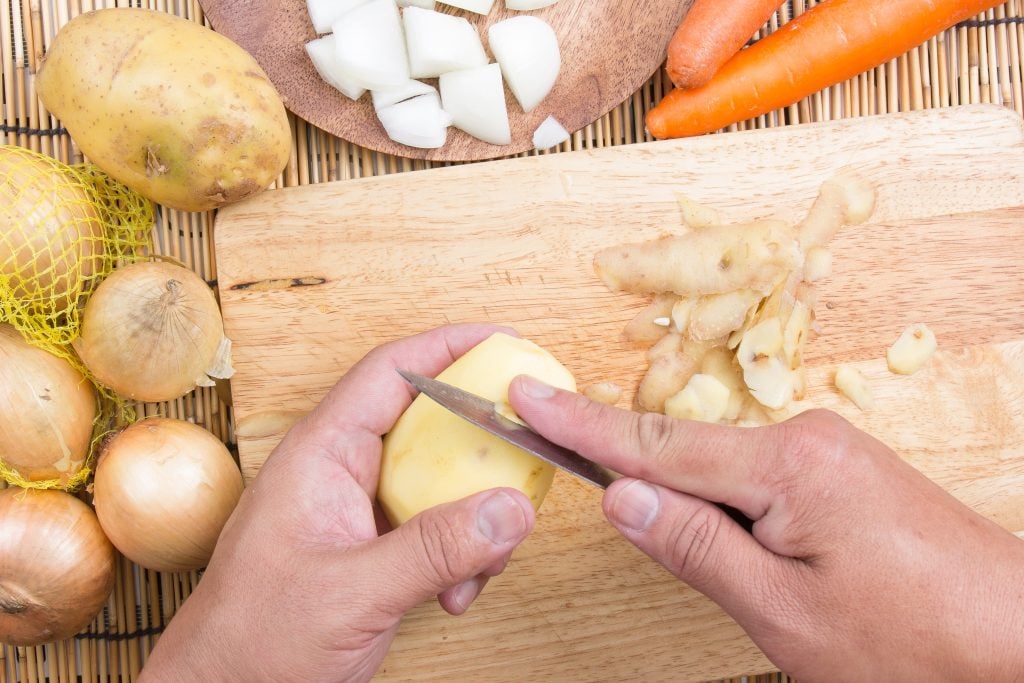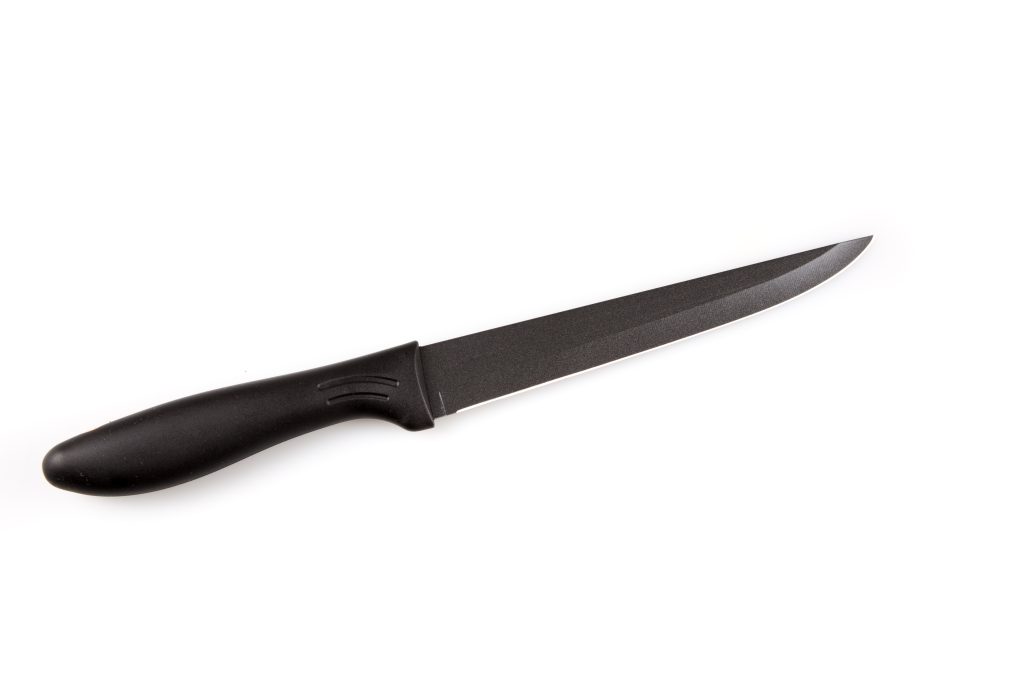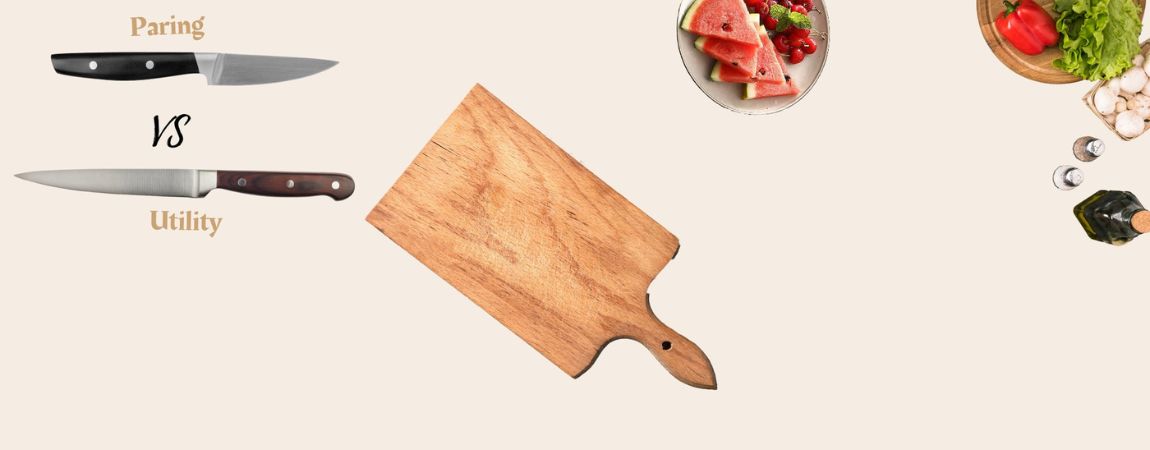Choosing the right tool for the job can be more challenging than many new chefs expect. While they share plenty of overlap, utility knives and paring knives simply aren’t the same. On this page, we’ll be exploring the paring knife VS utility knife debate.
We’ll cover what each knife is good for, where they differ, and how to know which option might be right for you. Using the right equipment in the kitchen is one of the best ways to boost your progress so be sure to pay close attention to this article.
Paring Knife Overview
Paring knives are comparatively short, thin knives that are surprisingly versatile. They’re used for a broad variety of basic kitchen tasks and can prove invaluable in the right pair of hands. There are several types of paring knives that you might like to consider:
- Bird’s beak paring knives – have a curved tip for peeling work and intricate garnishes.
- Spear point paring knives – with a pointed tip, excellent for small, precise cuts.
- Sheep’s foot paring knives – have a rounded tip that’s ideal for vegetable prep and julienne.
- Standard paring knives – the most popular option used for a variety of kitchen prep.

Paring Knife Size
The first thing to mention here is that paring knives typically feature quite short blades – from 2 ¼” to 4 ½” in most cases. This makes them a touch shorter than utility knives. This can make them excellent for more intricate cuts that a longer blade might not be able to achieve.
It’s a good idea to get a feel for the kind of blade length that works for you. When possible, physically hold the knives you’re thinking of buying in your hand. This way, you can test what feels right for you.
Paring Knife Versatility
This kind of kitchen tool is designed with versatility in mind. Anything from julienne to intricate garnish work, to basic food prep, is possible with a good paring knife. For some mincing and slicing tasks, however, the shorter blade may prove inconvenient for some home cooks.
If you’ve picked up a full suite of paring knives (sheep’s foot, bird’s beak, etc) this level of versatility only increases.
Paring Knife Uses
- Julienne
- Vegetable prep
- Intricate garnishes
- Precise, small, intricate cuts
- Basic kitchen tasks
Paring Knife Basic Stats
- Blades 2 ¼” to 4 ½” in length
- Blades 0.01 – 0.03 inches thick
- HRC ratings between 57 and 59
Utility Knife Overview
Much like paring knives, utility knives are incredibly versatile tools in the right kitchen. They’re typically a little longer and heavier than their paring knife counterparts and exist as a kind of hybrid between a slicing and a paring knife. If you’re looking for a comfortable middle ground, this type of knife might be perfect.
They often feature scalloped blades to make ‘stickier’ meats and other foods glide off more easily.

Utility Knife Size
Utility knives are longer than paring knives, measuring between 4 and 10 inches. This longer length makes them excellent for slicing fruits, vegetables, and larger foods. It also comes in handy when scraping and cleaning meats or fish scales.
Tiny, intricate cuts might be more challenging with this kind of knife.
Utility Knife Versatility
Provided you know what you’re doing, a good utility knife will make a huge variety of kitchen tasks possible. Anything from slicing, to dicing, to mincing, to general kitchen prep is all possible. The added length makes scraping and cleaning tasks easier too.
Utility Knife Uses:
- Slicing vegetables and fruits
- Mincing and dicing tasks
- Scraping and cleaning meats and fish scales
- General kitchen prep
Utility Knife Basic Stats:
- Blades 4-10” in length
- Blades 0.02 – 0.04 inches thick
- HRC ratings between 56 and 58
Utility Knives VS Paring Knives – How They’re Different
In this section, we’ll outline the main ways in which utility knives and paring knives are different. If you’re looking for a TLDR – utility knives are a touch longer and thicker than paring knives.
Both are very versatile, but paring knives are better for intricate cuts and utility knives and better for scraping/ cleaning tasks.
The Differences in a Table
| Knife | Chinese | Serbian |
| Blade Length | 2.25” to 4.5’’ | 4-9″ |
| Blade Thickness | 0.01 – 0.03” | 0.02 – 0.041” |
| Flexibility | low | A touch higher but still low |
| HRC | 57-59 | 56-58 |
| Main Purpose | Small, intricate cuts, kitchen prep | Slicing fruits, and vegetables, basic kitchen prep |
Size
Paring knives are the smaller option of the two. Utility knives typically feature longer, slightly more flexible blades. This makes intricate, tiny cuts a job for your paring knife and broader, more sweeping cuts a task for your utility knife.
Versatility
Both types of knives can be super versatile in the right pair of hands. For general slicing, kitchen prep, and cutting work, they’re both excellent options. It’s just important to keep the different blade lengths in mind.
Which One Should I Choose?
This comes down to the length of the blade you’re using. Prepping intricate garnishes or making tiny cuts? Opt for a paring knife. Slicing meats or prepping vegetables? A utility knife may work best.
Paring Knife Recommendation
Looking for a paring knife recommendation? We think this one is simply superb:
– HENCKELS CLASSIC 4-inch Paring Knife
It combines value with performance in a way that’s rare to see!
Utility Knife Recommendation
Need a new utility knife? We think this one is truly fantastic:
– TUO Utility Knife 5’’ Black Hawk Series
The handle, in particular, is super comfortable for prolonged use.
Read our review on the best utility kitchen knives.

Final Thoughts
For delicate, complex cuts, reach for your paring knife. For overall versatility and scraping, grab your utility knife. Whichever tool you choose, we hope it serves you well for many years to come!




Post Your Thoughts